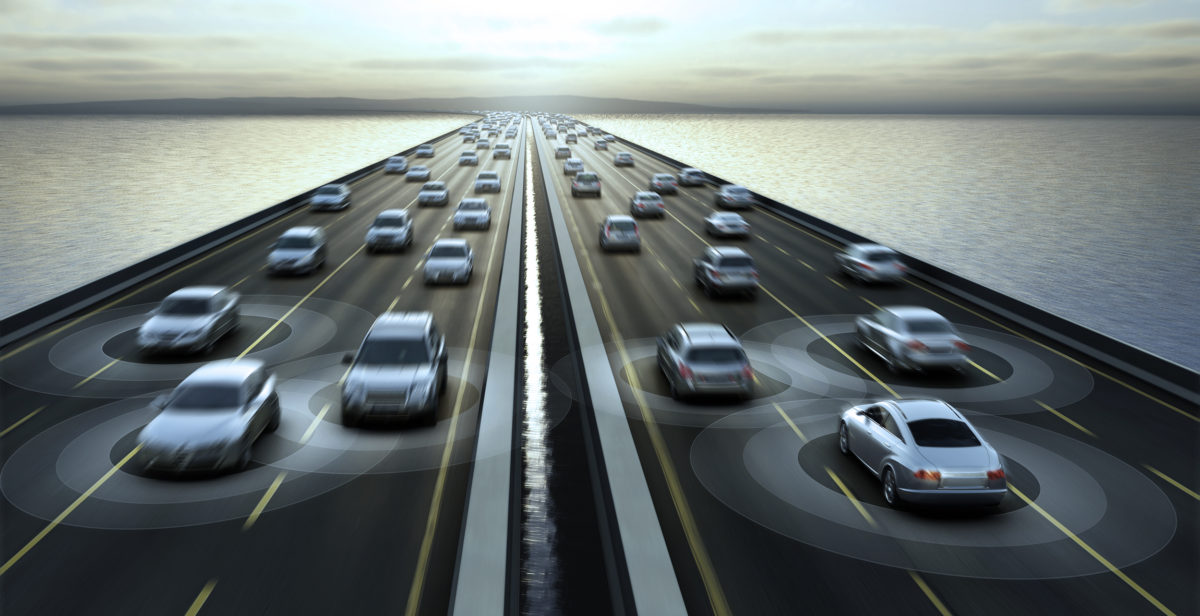Digital transformation is an omnipresent topic in the media and concerns almost every industry and company. We all have heard of Tesla disrupting the market with its electric cars. Google and Apple also have their own car projects. What are the actual major car manufacturers like Volkswagen up to?
Smartphones assist us in our daily life, except while we drive. As we all know, there are some systems in place that let your smartphone be used e.g. as a tool for navigation or source of media for the car radio.
VW goes a step further and started a concept called Car Net. The goal is to make the car smart, or connected to the outside. The system connects all individual functions of the car and gives them the ability to communicate with each other. Via the internet a constant communication link between the car and its manufacturer is enabled, which includes other vehicles, mobile phones and even traffic signs. The term connected car covers all safety, information and entertainment systems found in the car and connects them with internal and external parties.
The connected car is equipped with communication technology that can send and receive data directly without the need for a smartphone. To give you a few examples, the car can provide the driver with current traffic jams as well as weather and road conditions. Other vehicles can send emergency information about accidents that lie ahead. The car can also automatically detect empty parking spots and lead the driver to them. In the future, the connected car will also be able to connect directly with its surroundings.

This includes traffic lights or railroad crossings that share information, so that the car knows, that there is a red light at the next intersection. Such a system could also be used for automatic speed adjustment according to the traffic flow or for collision avoidance.
Volkswagen has developed its own solution, however it relies partly on the usage of Android Auto or Apple CarPlay. We think that VW, as the second largest car manufacturer worldwide should be able to develop a truly superior solution. However, when it comes to developing innovative software within VW, we identified a couple of problems that prevent the company from doing so.
Problem for VW
The main problem we identified is the size of Volkswagen and its hierarchical structures, that promote bureaucracy rather than innovation. A huge disadvantage of the hierarchical management in VW are its strict (and non-flexible) communication paths. If the Volkswagen Group IT is involved, then the communication paths are getting even more complex compared to just the in-house IT department, as decision makers from other brands are also involved in the process. Especially in times like these, where Tesla pushes On-the-Air updates to its cars every couple of months, the requirements for software development are constantly changing. This fast-paced environment is not reflected in the current structure of the company.
Secondly, the software development within a car manufacturer like Volkswagen is hardly independent. There is a certain political influence by managers that fear their power fading away, when the focus shifts more and more towards the software development. Managers may also prevent their power fading away by participating in initiatives and projects where they are not able to contribute efficiently. Both examples show that the independency of software development is currently not guaranteed within the existing structures.
Lastly, the main focus for Volkswagen as a company is of course to manufacture cars and to develop efficient engines and not to write software for their cars. However, this approach is most likely too narrow-minded as software development gets more and more important, especially with the introduction of Connected Cars and autonomous driving. On the other hand this also means that car manufacturers struggle to evolve more unique selling points only from developing their cars or engines further. When we look at Tesla, whose progressive software innovations are seen as a wake-up call by the automotive sector according to our interview partner, we see that the CEO of Tesla, Elon Musk previously founded an innovative web service to facilitate online payments and had no prior experience in manufacturing cars. This demonstrates a perfect example for the increasing importance of software and the decreasing importance of the traditional hardware engineering component.
Solution for VW
We developed a strategic approach for Volkswagen to solve the described problems, that differs between a between a short, medium and long term timeframe.
The long term vision for Volkswagen should be to establish the software development as an independent unit in its value chain. By pursuing this strategy VW does not only meet the customer needs for quicker development cycles of software but also accounts for the rapidly increasing importance of software in the whole automotive industry.
In the medium term we already expect that all software development activities that concern the concept of connected car are bundled in an independent entity, whose focus is solely on software development.
In the short term, we want to complete the exact planning for the new independent entity and start transferring managers, project teams and new hires to the software development entity.

